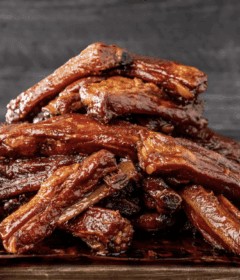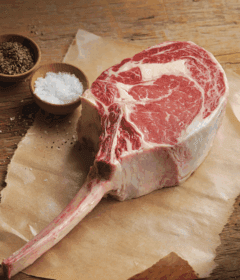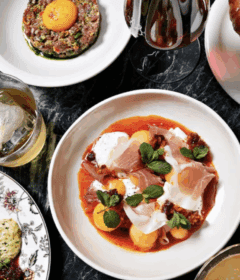Popular Wine & Cheese Pairings
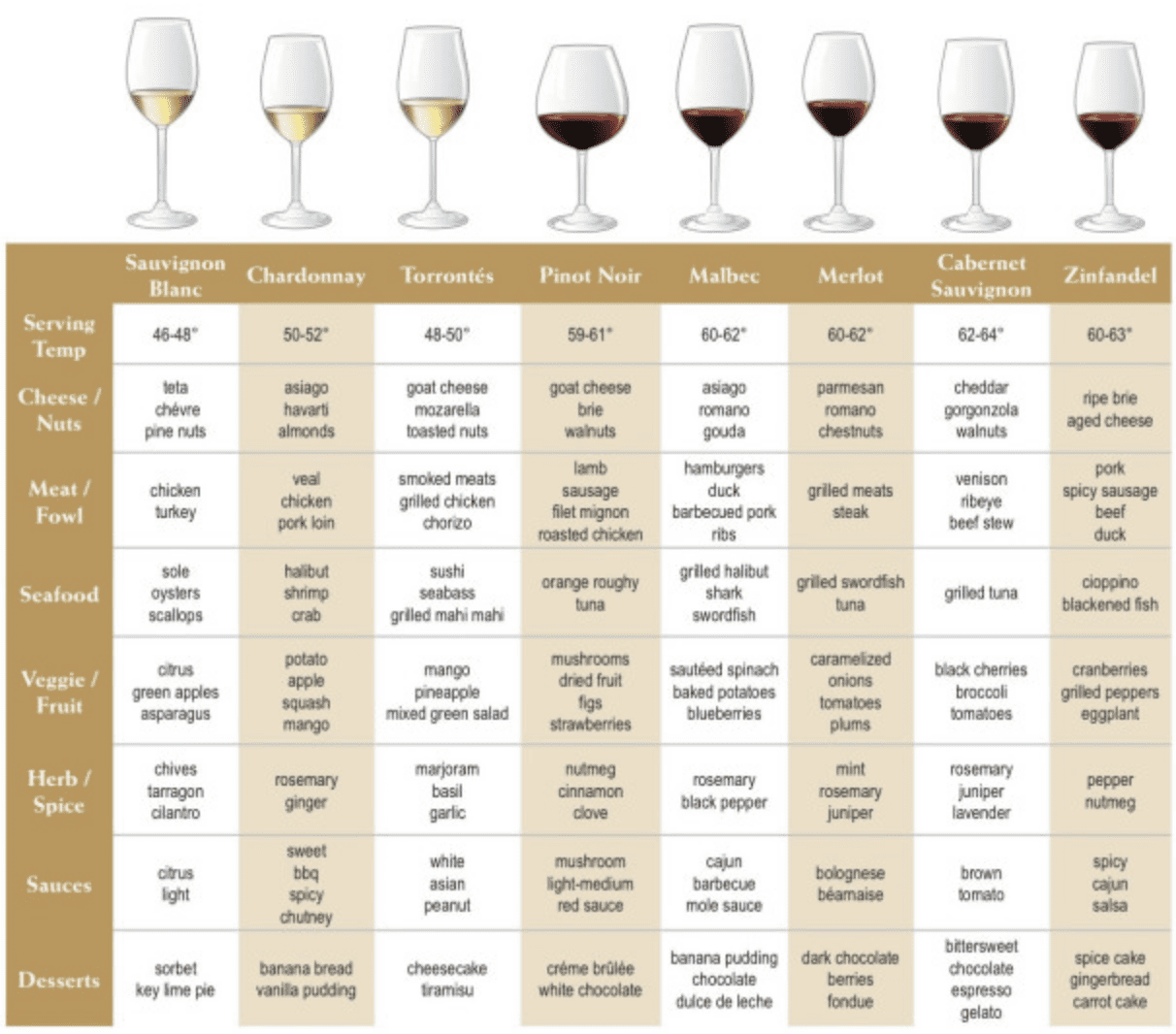
Here’s a list of Popular Wine & Cheese Pairings. But, Remember, it’s hard to go wrong when you’ve got a glass of wine in one hand and cheese in the other. Try these basic guidelines to wine and cheese pairings:
Try not to pair a strong wine with a mild cheese. If one of the flavor profiles dominates the other, the taste experience will not be favorable.
Don’t overanalyze. Everyone has their own taste preferences, so offer at least one white wine and one red wine and let your guests decide.
Soft cheese pairs well with sparkling wine or white wine that’s light on oak flavor, such as Chardonnay.
Sharp cheese or aged cheese—six months or older—are best served with full-bodied wine to compliment the bold flavors.
Wine and cheese have gone hand in hand for centuries, but with today’s ever-increasing options for both wines and cheeses, the pairing decisions can be staggering. So, to take a lot of the guesswork out of pairing here are some guidelines for pairing your wines with cheese.
Popular Wine & Cheese Pairings What to Know
Pairing wines and cheeses from the same region is a good, “safe” place to start wine and cheese combinations. For example, a good Italian Chianti and a potent Parmesan will provide a fascinating mix.
Remember that the harder types of cheese (i.e. Cheddar or Parmesan) can handle more tannic wines. While creamy cheeses, such as Brie, typically pair better with wines that have more acidity, like a Chardonnay. Give salty cheeses a sweet wine partner (i.e. Blue Cheese and Port).
Popular Wine & Cheese Pairings 5 Tips
Tip #1: Pair wines and cheeses with equal intensity.
This tip is the most important takeaway for creating your own pairings. The delicate flavors of Gruyère would be overwhelmed by a big, bold Cabernet Sauvignon, but are perfectly balanced when paired alongside a Pinot Noir.
As a general rule, wines over 14.5% ABV are more intense and taste better with more intensely flavored cheeses.
Wines under 12% ABV are less intense and match nicely with more delicately flavored cheeses.
Tip #2: Bold red wines pair best with aged cheeses.
As cheese ages and loses water-content, it becomes richer in flavor with its increased fat content. These two attributes are ideal for matching bold red wines because the fat content in the cheese counteracts the high-tannins in the wine. For the best results, select cheeses aged at least a year, including Cheddar, Gruyère, Manchego, Gouda, Provolone, or Parmesan-style varieties like Parmigiano-Reggiano and Grana Padano.
Tip #3: Match super funky cheeses with sweeter wines.
Sweeter wines like Moscato, Gewürztraminer, Late Harvest dessert wines, and Port match wonderfully with stinky, washed-rind, and blue-veined cheeses. Why? The sweetness in the wine helps balance the “funk” in the cheese and makes it taste creamier. Also, the “stink” of the cheese will help balance the sweet taste of the wine.
Two classic pairings you must try if you like funky cheeses are Port with Stilton and Sauternes with Roquefort. Delicious!
Tip #4: Sparkling wines are incredible with soft, creamy cheeses.
Sparkling wines have high acidity and carbonation, which offer a palate-cleansing effect to creamy, sticky cheeses such as Brie, Muenster, Camembert, Cremont, or Époisses de Bourgogne.
Tip #5: Wines and cheeses from the same place pair well together.
More often than not, you’ll do well to trust the local traditions and match wines and cheeses from the same region together. A few great examples of this include Sauvignon Blanc with Goat Cheese (Loire Valley, France), Chardonnay with Époisses de Bourgogne (Burgundy, France), and Garnacha with Manchego (Spain).
Popular Wines and Cheese Pairings
Even though it is a centuries-old tradition, matching cheese and wine together can still be a challenging and intimidating task. If done correctly, a perfect match can be an exquisite experience. Every detail in making the pairing needs to be considered. While a wine or a cheese by itself may be spectacular, that does not necessarily mean that pairing them is a good idea. Most people have not had years of experience focusing on tasting many wine and cheese options and become familiar with the characteristics and qualities of each. Here are some ideas that will help guide you into creating successful pairings:
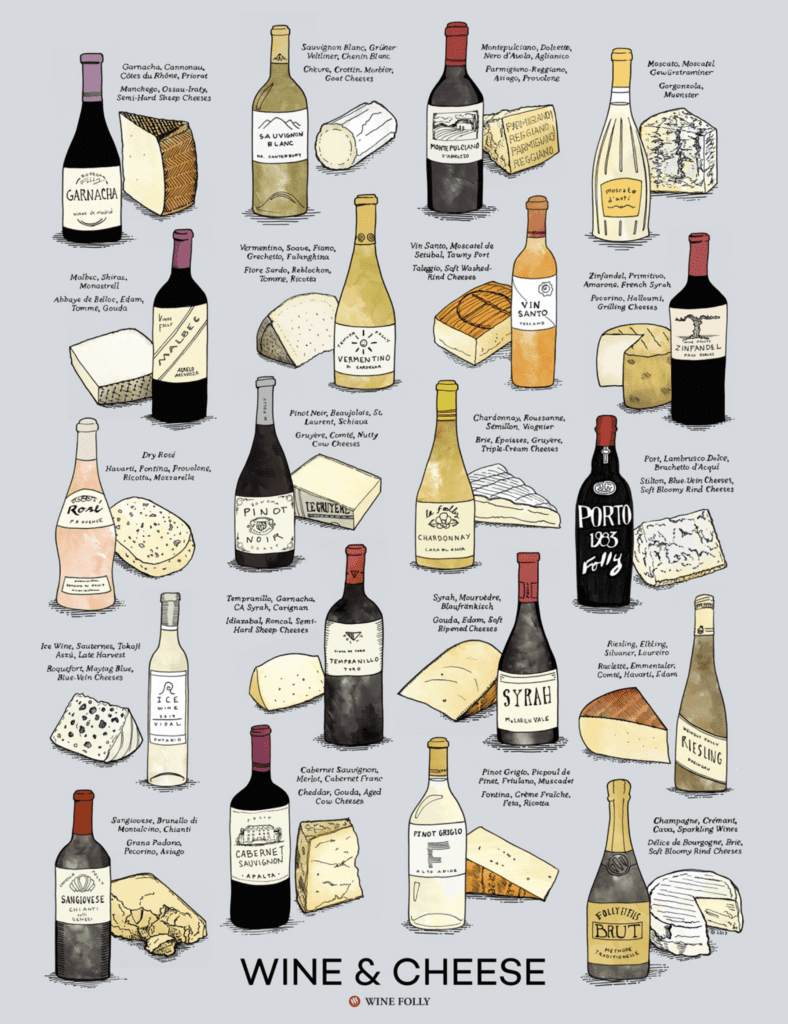
10 Popular Wines and Cheese Pairings
Cabernet Sauvignon and Extra Sharp Cheddar
A full-bodied and dry red Cabernet Sauvignon has hints of herbs and dark fruits. When paired with the extra sharp cheddar, the red wine draws out the bold cheddar flavors of this strong cheese. Cabernet Sauvignon also works well with other intense cheeses, particularly ones that are firm and salty.
Cabernet Sauvignon and Aged Cheddar
Why it works: A bigger, bolder cheese needs a wine that can lift it up, spin it around, and not get winded in the process. An aged Cheddar has a fattiness that matches up wonderfully with the mouth-drying tannins you’ll find in many Cabernet Sauvignons. Plus, their respectively bold flavors will match, instead of one drowning out the other.
Merlot and Garlic and Herb Cheese
The garlic and herb cheese has sharp and tangy flavors. When paired with the Merlot, which is a dry red wine that is medium to full-bodied, the cheese brings out notes of black cherry, plum, and black tea. The garlic and herb cheese flavors are more heavily emphasized because of the Merlot’s dry fruitiness.
Malbec and Vintage or Reserve Cheese (Edam)
Reserve or vintage cheese has robust flavors, which need a red wine that can hold up against it. Malbecs are medium to full-bodied red wines that have black fruit, anise, and herb notes. The strong flavor of the Malbec complements the vintage or reserve cheese.
Malbec and Edam
Why it works: The combination of Edam’s nutty flavors and Malbec’s velvety fruit is the sort of pairing that just about anyone can enjoy. Both the wine and the cheese are flavorful and aromatic without being overpowering, and the result is a complementary combo of complex flavors.
Zinfandel and Jalapeno or Hot Buffalo
Zinfandel is a dry red wine that is medium to full-bodied and has dark jam and black pepper hints. Because Zinfandel is fruity and spicy, it pairs well with these spicy cheeses for a bold combination.
Pinot Noir and Vermont Sharp Cheddar or Gruyere
Vermont Sharp Cheddar is aged and needs to be paired with a wine that has earthy notes, such as Pinot Noir. Pinot Noir is a dry and light to medium-bodied red wine that has these characteristics along with ripe red fruit flavors. It also works well with a nutty cheese with medium firmness, such as Gruyere.
Pinot Noir and Gruyere
Why it works: The ever-present red berry fruit of a Pinot Noir is the perfect match for the nutty flavors found in a medium-firm cheese like Gruyere. Both have just the right amount of aroma and complexity to them, without running the risk of one overpowering the other.
Chianti and Tomato Basil or Tuscan
With smoky undertones of plum and cherry, Chianti is a dry red Italian wine that is medium-bodied and pairs well with Mediterranean flavors such as tomato and the basil.
Red Blend and Sharp or Smoked Cheese
Wines made from a blend of red grapes are usually medium-bodied and well-balanced. With their fruit, herb, and spice flavors, red blends work well with smoked or sharp cheese because all the flavors become enhanced significantly. Red blend wine tends to work well with all meal options because it is considered well-rounded.
Syrah/Shiraz and Aged Cheese
Aged cheese has intense savory flavors. Wines that are paired with them need to be equally intense and should also be rather dry. Syrah holds up well in this pairing because it is dry, medium to full-bodied, and has dark fruit and herb flavors. A Shiraz with tobacco notes works particularly well with smoked cheeses.
Chardonnay and Mild Cheddar, Colby Jack, or Triple Cream Cheese
Chardonnay is a dry, medium-bodied white wine with apple and pear notes, which makes it fruity and crisp. These features help enhance the characteristics of either of these mild cheeses, particularly the creaminess and the sweetness. Pungent washed-rind cow’s cheeses will lose its stinky characteristics when paired with Chardonnay, but you can also opt for milder, traditional triple cream cheese to avoid the smell.
Sauvignon Blanc and Monterey Jack or French Goat Cheese
This cheese is known for its subtleness and needs to be paired with a wine that won’t overwhelm it. Sauvignon Blanc is a light-bodied, dry and bright white wine that has citrus and grassy notes that complement the cheese. This wine also works well with firmer French goat cheese that has developed spicy flavors.
Sauvignon Blanc and Goat Cheese
Why it works: While they’re earthy and tart, most goat cheeses are a bit of a blank slate, so the citrus and mineral notes found in a French Sauvignon Blanc bring out the wonderful nutty and herbal flavors that can be found in the cheese. The acidity is also a great way to cut through the heaviness of the goat cheese.
Wine & Cheese Pairing Poster >>

